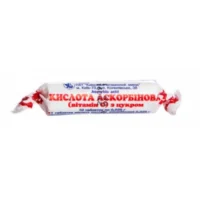Description
Omega 3 (Fish oil) 500 mg capsules №60 vial
Ingredients
- Each capsule contains 500 mg of Fish Oil
- Omega-3 Fatty Acids (Eicosapentaenoic Acid (EPA) and Docosahexaenoic Acid (DHA))
- Gelatin
- Glycerin
Dosage
Recommended dosage: 1 capsule daily with a meal, or as directed by a healthcare professional.
Indications
Omega 3 (Fish oil) 500 mg capsules are indicated for maintaining healthy cholesterol levels, supporting heart health, and promoting overall well-being.
Contraindications
Do not use if you are allergic to fish or any ingredients in the product. Consult a healthcare provider before use if pregnant, nursing, or taking medications.
Directions
Take 1 capsule daily with food. Do not exceed the recommended dosage.
Scientific Evidence
Omega-3 fatty acids, particularly EPA and DHA found in fish oil, have been extensively studied for their cardiovascular benefits. Research suggests that omega-3 fatty acids can reduce the risk of cardiovascular events and mortality.
Additional Information
Omega-3 fatty acids play a crucial role in brain function, normal growth, and development. Studies have shown that fish oil supplementation may help improve symptoms of depression and anxiety. Incorporating Omega 3 (Fish oil) 500 mg capsules into your daily routine can be a simple yet effective way to support your overall health and well-being.
Pharmacological Effects: Omega-3 fatty acids are essential nutrients with anti-inflammatory properties that help maintain healthy cholesterol levels and support brain health.
Clinical Trials: Clinical trials have demonstrated the benefits of omega-3 fatty acids in reducing triglyceride levels, lowering blood pressure, and decreasing the risk of heart disease. Studies have shown a significant reduction in cardiovascular events with omega-3 supplementation.





